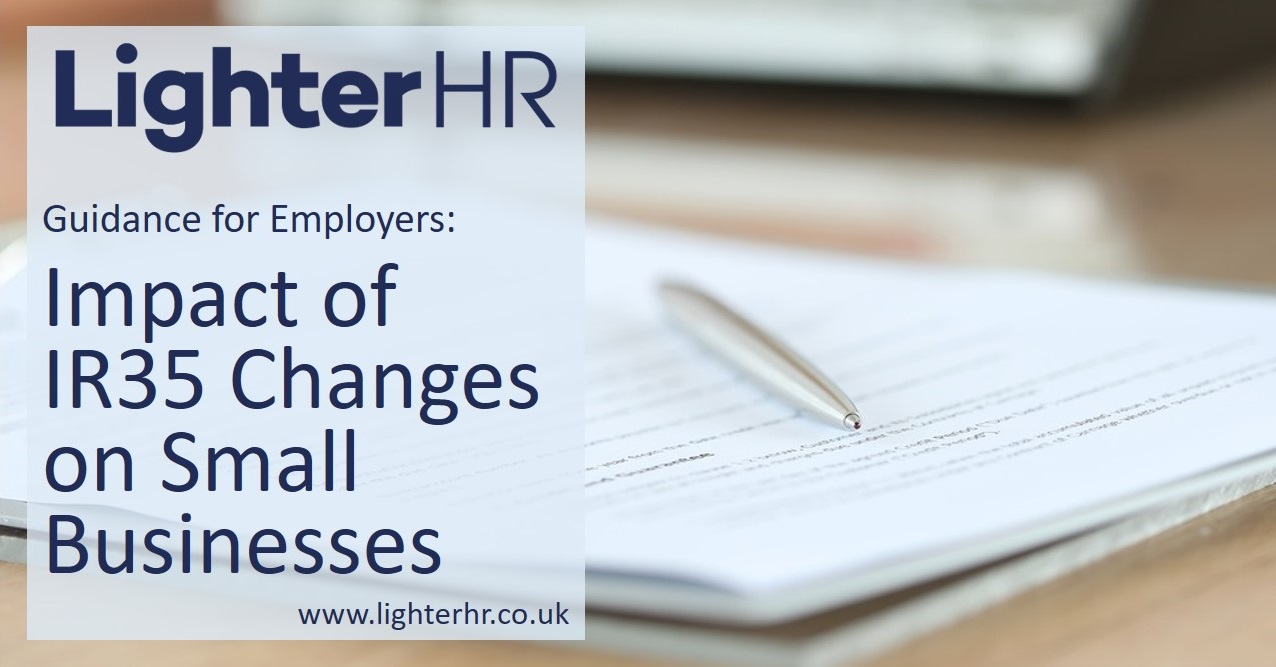If you don’t work with contractors or freelancers then this blog post isn’t really for you. If you do, then you should keep reading as there are changes coming that could have a big impact on your workforce and which place additional responsibilities on you as a company.
1. What is IR35?
IR35 was legislation that was created around 20 years ago to stop employers and individuals exploiting tax loopholes in relation to how they engaged. It addressed what was known as “disguised employment”.
By engaging with someone as a contractor or freelancer and having them issue the company with an invoice, the company avoided paying holiday and sick pay, pension contributions and employer national insurance contributions. The individual didn’t have any employment rights as they weren’t an employee, and this can be very attractive to companies. It’s far easier to end an agreement for services than it is to end employment after all.
In addition to the benefits to companies, there were benefits to the contractor or freelancer. Many paid less income tax as they set up limited companies, paid themselves a minimum wage and took the rest of their earnings as dividends which were taxed at a lower rate than salaries. The lower tax rate compensated for the lack of sick pay, holiday pay and stability.
The tax benefits to the individual have been slowly eroded by HMRC over the years although there is still some small advantage to be had. However, the company continues to avoid paying sick pay, holiday pay and national insurance.
Now, if an individual is a true contractor then this will remain the case. However, where companies and individuals have been using the freelancer/contractor model as a way to save tax but the reality is that the individual is really an employee, things need to change.
2. What is changing for IR35?
IR35 itself isn’t changing but where the responsibility sits for determining whether an individual is inside or outside of IR35 is. This change has already happened within the public sector and, from 6th April 2020, it changes in the private sector too.
At the moment, it is the responsibility of the freelancer/contractor to assess whether they are inside or outside of IR35. If they deem themselves to be inside then they need to be paid through payroll with all of the relevant deductions made at source. If they deem themselves to be outside of IR35 then they can invoice a company and then deal with their own tax affairs through the self-assessment process.
If the contractor gets their assessment wrong then the contractor is liable for all back-dated taxes and the employer may face a bill for the employers national insurance contributions that they should have been making.
From 6th April 2020, the company becomes responsible for making the assessment as to whether an individual is inside or outside of IR35. If the company gets the assessment wrong then the company will be liable for all taxes owed. It’s going to be an expensive mistake to make.
3. How do you know whether someone is inside or outside of IR35?
This is too complex to get into in a blog post unfortunately as there are many different factors that will determine the status of an individual. There is an online HMRC IR35 tool that you can use to help you make the assessment but the tool doesn’t cover every scenario.
When making the assessment you’ll need to look at the contract that you have in place with the individual, their working pattern, the length of time they have been providing services to you, whether they are truly able to determine how and when they work and many other factors. The tool is definitely a good starting point.
4. What happens after I make the IR35 assessment?
Having made the assessment, you need to provide the individual with a Status Determination Statement (SDS) and you need to keep a copy of this for the business.
Don’t think that you’re safe, however, if you’re using contractors through an umbrella company or an agency. You, as the company receiving the service, are responsible for carrying out and documenting the assessment.
5. Are there any exemptions from IR35?
Finally, some good(ish) news!
If you fulfil at least two of the three criteria below then your business is exempt:
- have less than £5.1 million in assets
- have a turnover of £10.2 million or less
- employ 50 people or less
6. Getting Help with the Changes in IR35
One of the first things that you’ll need to do is look at your employment contracts and this is something that we help with. If you don’t currently have a contractor/freelancer contract then we can provide one. If you do have one then we can check it over to see if it fulfils the IR35 requirements.
It’s vital to note though that the contract isn’t everything. The main thing is the reality of how you engage with an individual. If you have someone who has been coming to you for the same days each week, doing what is really a permanent job, doing as you tell them to do, attending company meetings and training sessions then the chances that you are going to be able to conclude that they are outside of IR35 are slim. However, you’d be better to make that assessment now and deal with the matter proactively than to wait and see if you get caught.
You have until 6th April 2020 to assess all of your contractors/freelancers and issue them with a Status Determination Statement so this is probably not one of those things to put off any more.
Get In Touch

Speak with an HR Expert
Chat through your Employment Contract and IR35 requirements with one of our expert consultants to understand the actions you can take and how we can help.


